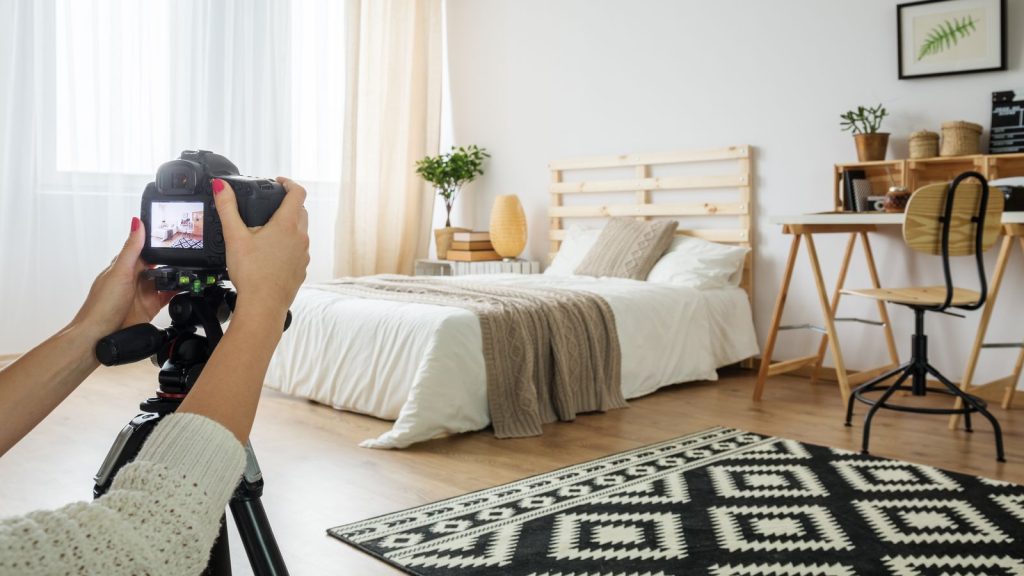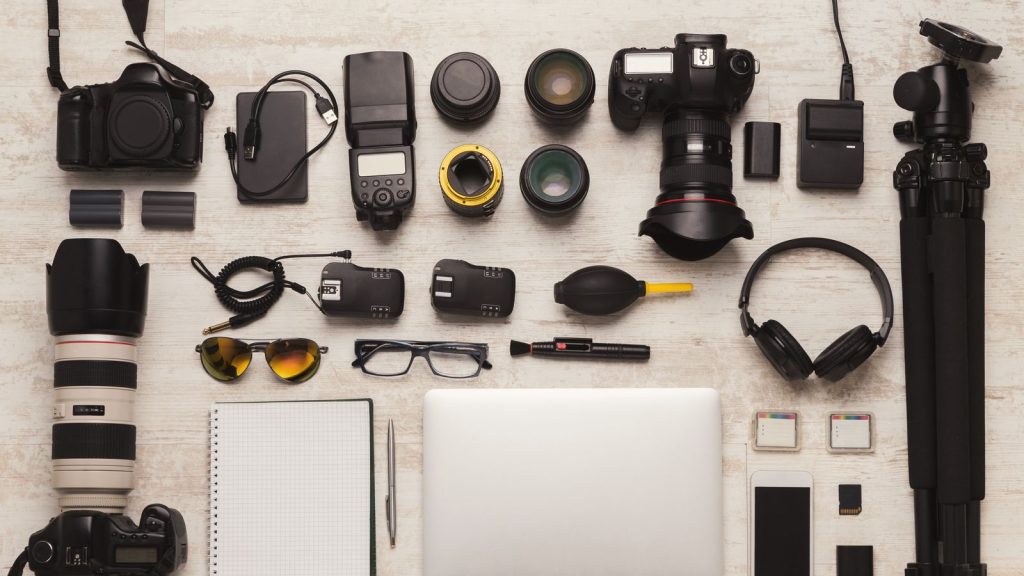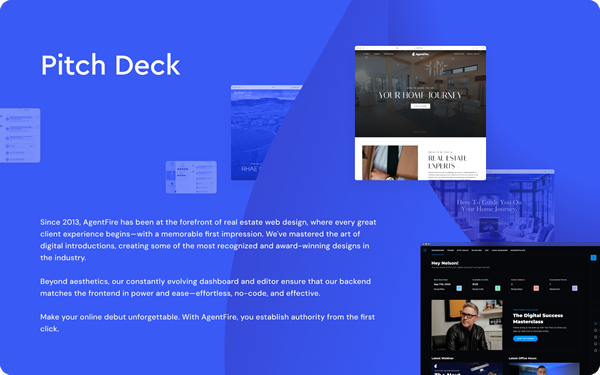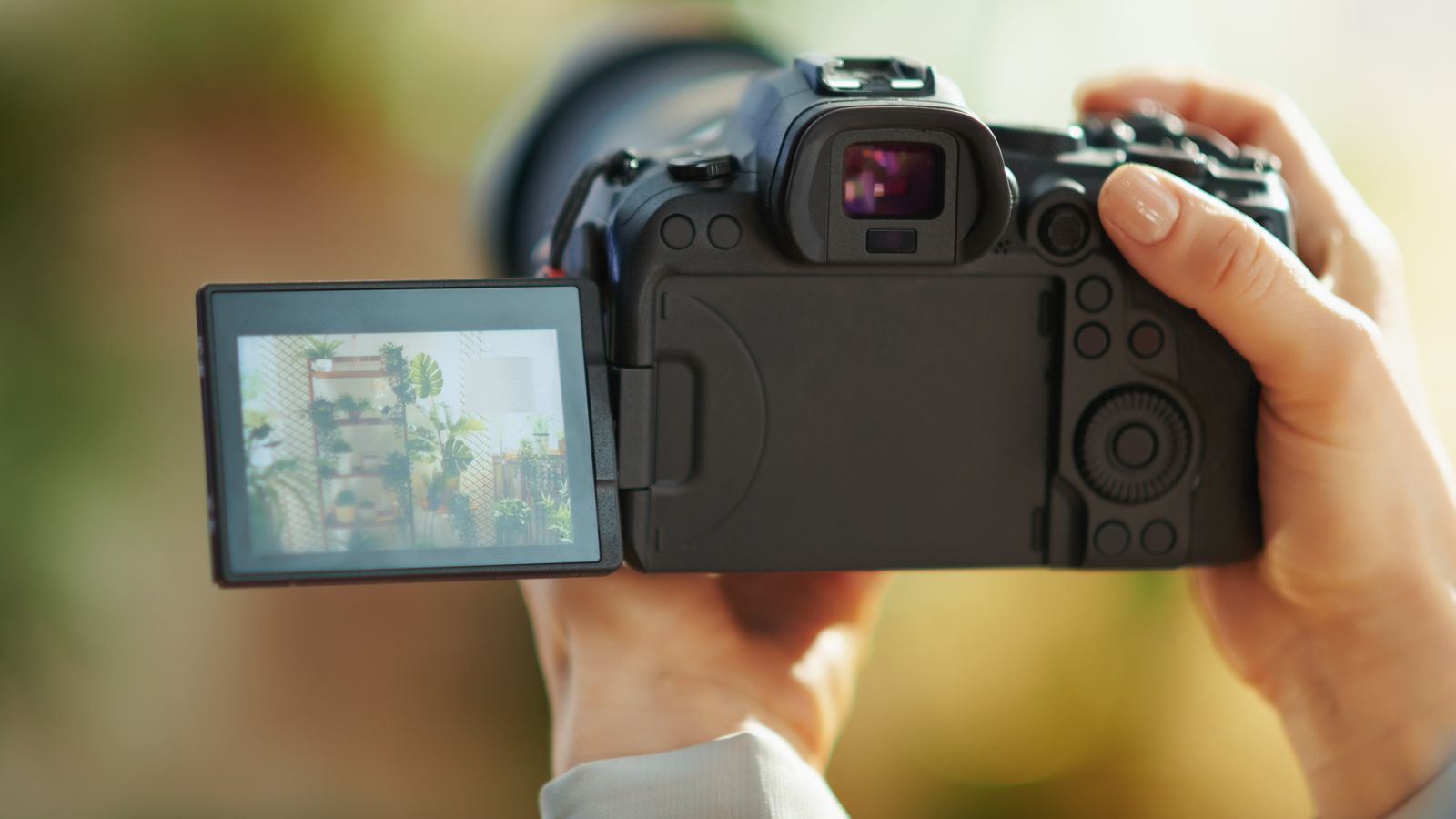A guide to real estate videography: everything you need to know about real estate video content creation including equipment, tips, and more.
Content Marketing
Video marketing is transforming how buyers search for and evaluate properties. Today’s real estate clients often begin their property hunt online, and a well-produced real estate video makes an immediate impact—turning casual browsers into serious prospects. The right real estate videography strategy can help you stand out, elevate your listings, and attract highly qualified leads.
According to the NAR, 80% of consumers watch videos online weekly, and half of those consumers are influenced by these videos to make a purchase. For real estate agents, property videos and other forms of video marketing not only inspire confidence in buyers but also contribute to faster sales, higher engagement, and stronger brand differentiation.
This guide will show you exactly how to integrate video into your overall marketing plan. Below, you’ll learn about key strategies, essential gear, common pitfalls, and ways to produce polished videos that give you a competitive edge.
What is Real Estate Videography?
Real estate videography is the practice of using professional (or well-organized DIY) filming techniques to highlight a property’s most attractive architecture, design elements, and lifestyle features. Through a mix of interior walkthroughs, exterior footage, and local area highlights, real estate videography creates a dynamic experience—one that still real estate photography cannot replicate.
Video content is increasingly a standard expectation for property listings. Not only do buyers love the convenience of video tours, but agents also benefit from building trust. When executed well, video marketing bridges the gap between digital browsing and in-person showings, making it easier for prospective clients to understand the property’s layout, flow, and ambiance.
Benefits of Real Estate Videography

Real estate videography offers several tangible benefits, both for individual listings and your personal brand as an agent or broker.
1. Showcases Unique Features
Pictures do a decent job of highlighting certain features like hardwood floors or large windows, but a video walkthrough provides the immersive context. If a listing has a stunning open-concept kitchen, a sweeping aerial view, or a luxurious pool area, video helps potential buyers experience those features in a more authentic way.
2. Builds Trust and Credibility
When buyers see detailed footage, they feel confident in the listing. Video removes many unknowns, reducing buyer hesitation. A polished production shows you’re serious about marketing and willing to invest in promoting a property effectively. This builds trust among both sellers (who hire you) and buyers (who rely on your information).
3. Improves SEO and Online Visibility
Search engines favor video content. Embedding videos on your property pages or sharing them on social platforms can boost rankings and make your listings more discoverable. In fact, real estate videos can keep visitors on your webpages longer, which positively impacts your real estate seo.
4. Saves Time for Buyers and Sellers
Showings can be time-consuming. By providing an in-depth video that prospective buyers can watch online, many can self-qualify whether the property suits them. That means fewer unproductive showings and a greater focus on serious prospects—a win for both buyers and sellers.
5. Expands Your Brand Presence
Real estate videography gives you a shareable asset that can be posted on social media, embedded on your homepage, and repurposed in ads. Over time, consistently launching high-quality videos helps strengthen your personal branding as an agent or broker who delivers professional, innovative marketing.
Types of Real Estate Videography
Real estate videography can encompass a variety of formats, each tailored to highlight different aspects of a listing or your expertise. Exploring multiple video types diversifies your marketing mix and helps engage a broader audience.
Property Tours
Property tours are the classic choice for showcasing the interior layout, architectural design, and key features. Aim for steady camera movements using a gimbal to keep shots smooth. Wide-angle lenses are ideal for highlighting spaciousness, while close-up clips illuminate unique touches like custom cabinetry or luxury fixtures.
Drone Footage
Drone footage beautifully captures sweeping views of the property’s surroundings, such as lush lawns, scenic backdrops, and proximity to local amenities. This bird’s-eye perspective is especially impactful for larger estates, waterfront properties, or rural land. Before flying, check local regulations for necessary permits or restricted zones.
Community Highlights
Neighborhood videos help buyers visualize the lifestyle they’re stepping into. Whether it’s a vibrant downtown, family-friendly suburbs, or resort-style communities, showcasing parks, schools, restaurants, and local events makes a property feel more appealing. Incorporating community-centered clips can set your listing apart from other agents who focus only on the home itself.
Agent Introduction Videos
Buyers and sellers often choose an agent based on personal compatibility and trust. Agent introduction videos let your personality shine through. You might talk about your philosophy on real estate, the markets you specialize in, or the extra services you offer. These videos serve as a digital handshake, building rapport before an in-person meeting ever takes place.
Luxury Highlight Reels
Luxury-focused videos shine a spotlight on high-end finishes, unique floor plans, architectural craftsmanship, or upscale amenities. Introduce the property with cinematic angles and emphasize exclusive features like wine cellars, built-in spas, smart-home systems, and private elevators. Adding elegant background music and meticulous editing helps reinforce a premium atmosphere.
Behind-the-Scenes or Renovation Updates
If you frequently handle renovated listings or house flips, behind-the-scenes videos illustrating the transformation can be compelling marketing content. Show how a space evolved from “before” to “after,” building anticipation and excitement. This style of video also helps prospective sellers see the value of improvements and staging.
Real Estate Videography Equipment

A reliable setup is key to capturing striking images, smooth motion, and crisp audio. Although smartphones now feature more advanced cameras, serious real estate videography generally benefits from specialized gear. Here’s what you need to know about cameras, lighting, composition, and editing software.
Camera Essentials
Investing in a dedicated camera with a wide dynamic range and 4K capabilities can significantly boost your video’s production value:
- Full-Frame or Mirrorless Cameras: Models like the Canon EOS R or Canon EOS RP provide excellent image quality, consistent performance in low light, and customizable settings.
- Wide-Angle Lenses (16–35mm range): Essential for capturing entire rooms in one frame. Wide-angle lenses help interiors appear open and inviting without distorting dimensions too heavily.
- Stabilization Gear: Use a tripod for static shots and a gimbal—like the DJI Ronin-S or a Zhiyun Crane—when moving through rooms. This ensures crisp, stable footage.
Lighting Basics
Well-lit scenes improve clarity and highlight decorative details. If you’re shooting interiors, many spaces rely on both natural sunlight and artificial lighting:
- Portable LED Panels: For consistent and easily adjustable lighting, panels like the Neewer 660 RGB help fill in dark corners and create a balanced scene.
- Reflectors: Simple collapsible reflectors bounce existing light back into the subject, reducing shadows and brightening footage.
- Interior Lighting Tips: Use daylight-balanced bulbs to avoid color mismatches between artificial and natural light, and always check for overexposure near large windows.
Composition Tips
Composition is about maximizing visual appeal. To achieve a polished look, use:
- Balanced Angles: Position the camera at around eye-level or slightly below eye-level for interior footage. This keeps the proportions accurate.
- Smooth Transitions: Integrate slow pans when revealing room features. If you’re transitioning between rooms, ensure consistent lighting and slow camera movement.
- Mix Wide Shots and Close-Ups: Begin with a wide-angle clip capturing the entire living room, then zoom in for a closer look at interesting elements like a stone fireplace or custom finishes.
Editing Software
Editing brings together raw clips into a cohesive, captivating video. It’s also where you can add branding elements, text overlays, and a soundtrack:
- Adobe Premiere Pro: A top choice for agents seeking complete control over color correction, transitions, and exports for various platforms.
- Final Cut Pro: Popular among Mac users for its intuitive interface and robust features.
- DaVinci Resolve: Known for advanced color grading tools, which can be especially helpful when balancing different lighting conditions.
Music and Voiceover Suggestions
Audio sets the tone, so choose suitable background music and clear narration such as :
- Royalty-Free Tracks: Sites like Artlist, Epidemic Sound, or PremiumBeat host music for every style—from modern city listings to quiet countryside homes.
- Voiceovers: Keep scripts concise and informative. A strong microphone such as the Rode VideoMic Pro+ ensures crisp narration devoid of echo or background noise.
Top Real Estate Videography Pitfalls
Even if you have great gear and a decent script, several pitfalls can derail your real estate videography efforts. Here’s how to sidestep the most common ones:
1. Overly Long Videos
Attention spans are short. Videos that stretch past three or four minutes may lose viewers. Focus on the property’s strongest highlights rather than filming every single corner.
2. Shaky or Unstable Footage
Without a gimbal or stabilizer, moving shots can be jarring. Keep the camera movements smooth, and always use a tripod for static scenes or close-ups.
3. Poor Lighting
Dark rooms look unappealing on video. Whenever possible, schedule shoots during daylight hours to leverage natural light, especially if the property has large windows. Supplement with LED panels for better coverage.
4. Lack of Organization
Random shots stitched together create a confusing narrative. Plan your shoot with a script or shot list. Transition logically from the entryway to main living areas, and then proceed to bedrooms, bathrooms, and outdoor spaces.
5. Ignoring Exterior and Community Features
Never forget the exterior. Outdoor landscaping, views, or proximity to desirable amenities can be huge selling points. Quick neighborhood clips add context and help differentiate your listing.
Real Estate Videography for Luxury Agents
Luxury buyers often expect a tailor-made customer experience. This includes high-production videos. Here are a few ways to elevate your approach:
- Highlight Architectural Details: Spend extra footage time on custom millwork, imported materials, marble countertops, or panoramic floor-to-ceiling windows.
- Cinematic Storytelling: Frequently, luxury homes come with a story—such as a historical background or a renowned architect’s involvement. Weave those narratives into your footage.
- Lifestyle Focus: For high-end listings, emphasize exclusive amenities (golf courses, private docks, gated communities, or concierge services). A deeper lifestyle portrayal resonates with luxury clients who value experiences and status.
- Polished Presentation: Consider working with a professional videographer who specializes in upscale listings. Bringing in aerial footage, seamless transitions, and color-grading can better reflect a property’s opulence.
Real Estate Videography Best Practices
Creating great videos is just the first step. To amplify visibility and drive more leads, you’ll need a strong strategy for promotion. Below are some proven ways to get your videos the attention they deserve.
Optimize Video Titles and Descriptions
Titles and descriptions matter for SEO. Always include location-specific keywords (e.g., “Modern Loft for Sale in Downtown Austin”) and highlight key selling points (like “Panoramic Skyline Views” or “Near Excellent Schools”). This helps your video appear in targeted searches.
Post on Social Media Platforms
Platforms such as Facebook, Instagram, TikTok, and YouTube provide massive audiences. Tailor your content to each platform’s style as a part of your social media marketing strategy. Short teaser clips on TikTok or Instagram Reels can funnel viewers to your YouTube channel or website for the full tour. Use engaging captions and relevant hashtags to extend reach.
Incorporate Email Marketing
Real estate videography guide: learn pro techniques for cinematic property tours, aerial footage & walkthroughs to attract leads. Embedding a property video in your newsletter or email list is an effective way to capture the attention of potential buyers. Write a short blurb describing the home’s standout features, then link recipients to the full video or landing page.
Sponsored Ads and Paid Promotion
If you want to accelerate exposure, paid channels such as Facebook Ads or Google Ads can help place your videos in front of specifically targeted demographics. Segment audiences by location, age, home-buying interest, or income level. For advanced retargeting, set up a pixel to track viewers who watch your video and serve them follow-up ads.
Showcase on Your Website and Listing Portals
Your own website is often the best place to house your video content. Embed videos on listing pages and optimize the page content with relevant keywords. Major listing portals like Zillow, Realtor.com, and Trulia also feature video tours—ensure your video is uploaded to expand viewership.
Frequently Asked Questions about Real Estate Videography
How long should a property video be?
Generally, aim for 2–4 minutes. This is long enough to highlight key features without losing viewer interest. For larger or luxury properties, you may need slightly longer videos—just make sure each moment is purposeful.
Can I make real estate videos using my smartphone?
Smartphones have come a long way in video capabilities. With good stabilization, lighting, and editing apps, you can create decent videos. However, professional cameras and equipment usually result in higher-quality footage that reflects a more polished brand image.
How often should I update my videos for an active listing?
If there’s been a remodel, price drop, or major landscaping upgrade, consider a new or updated video. Fresh visuals keep your listing content accurate and compelling. For standard listings without changes, one well-produced video generally suffices.
Final Thoughts
Real estate videography is one of the most powerful tools in your arsenal for attracting and converting potential buyers. Videos tell a property’s story more effectively than photos alone—offering viewers an authentic sense of space, style, and lifestyle. High-quality production signals professionalism, boosts engagement, and fosters trust.
To get the best results, combine compelling video content with a solid distribution plan. From optimizing your titles and descriptions to running targeted social ads, your strategy should revolve around placing these videos in front of the right homebuyers. And remember, whether you’ve chosen a DIY approach or hiring a professional videographer, consistent quality is key.
Ready to incorporate real estate videography into your marketing strategy? Book a Demo with AgentFire today and see how our platform can help integrate real estate videography into a complete, effective marketing solution.






